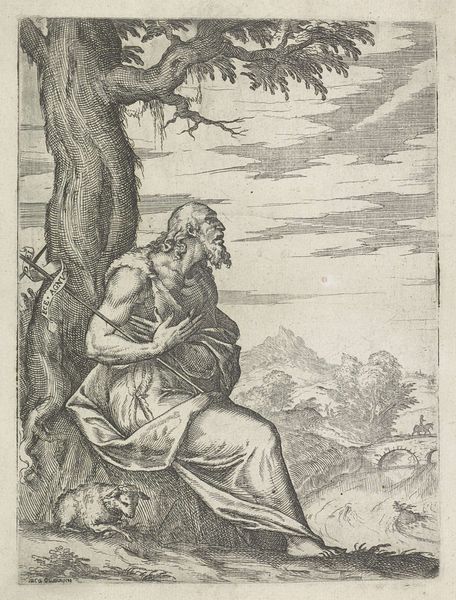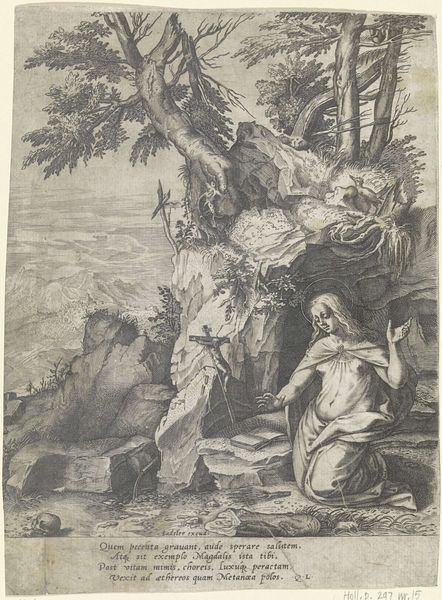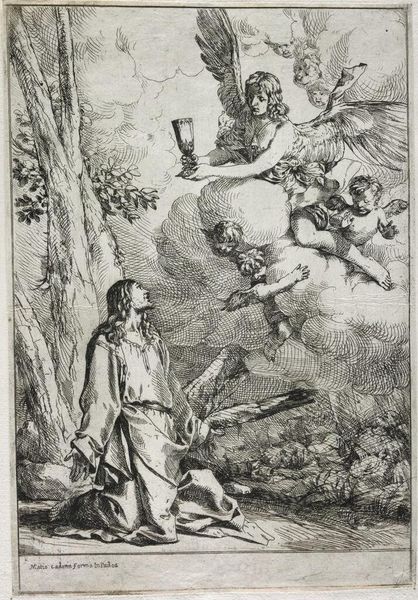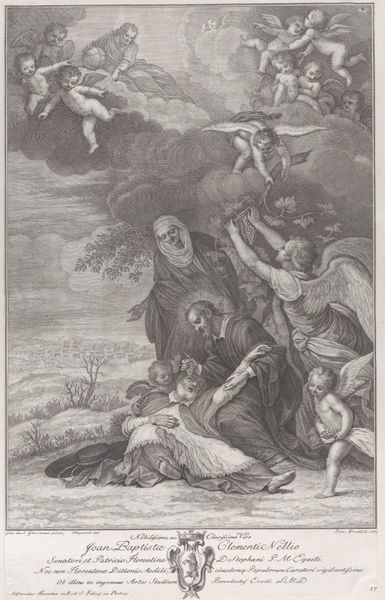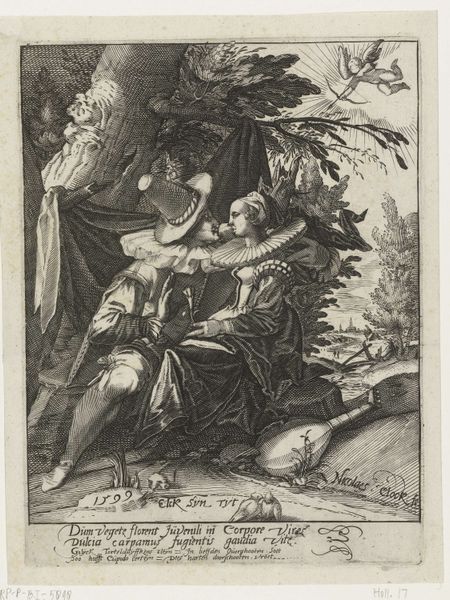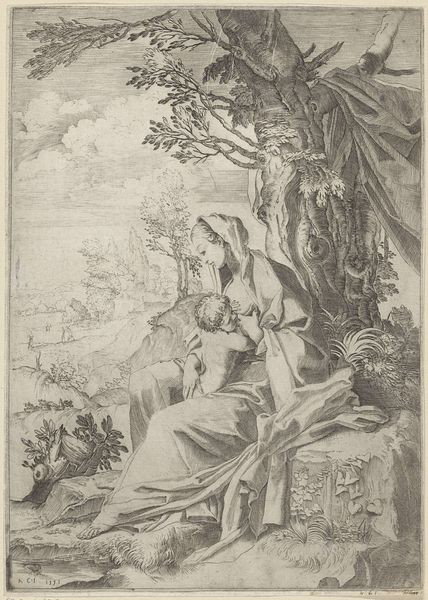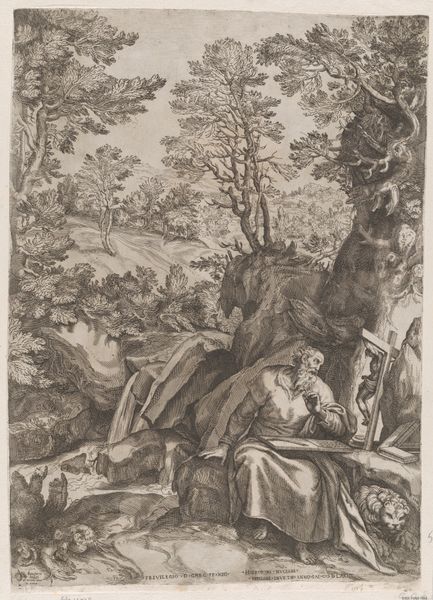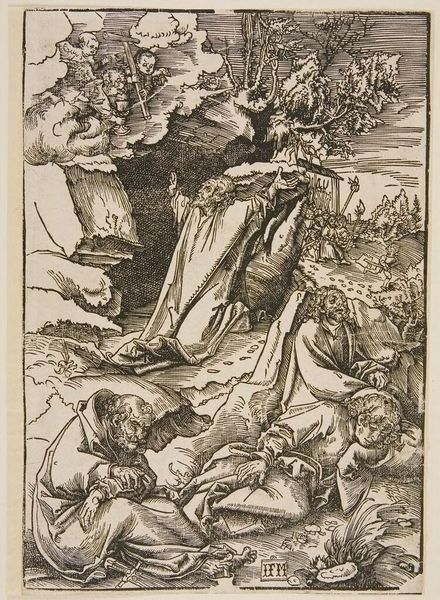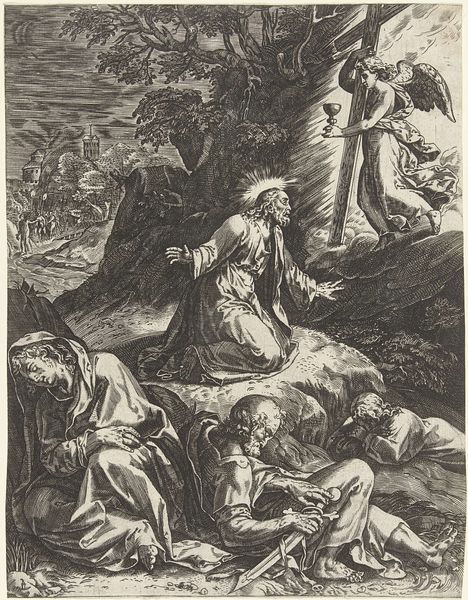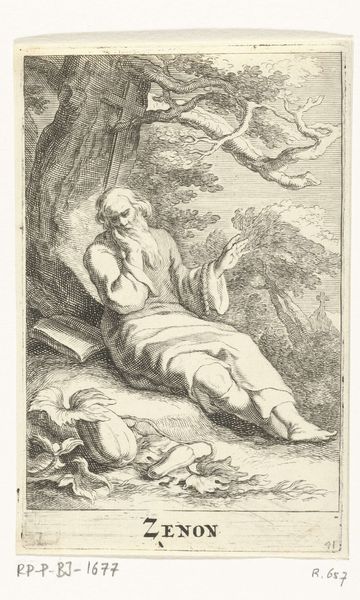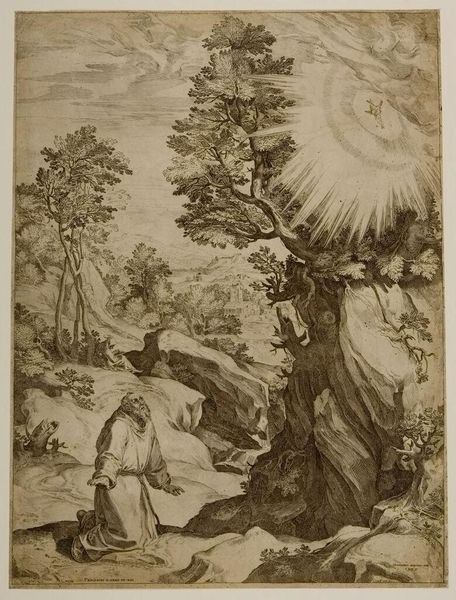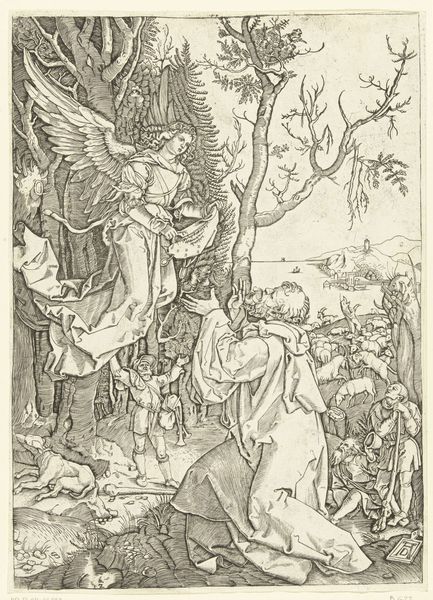
print, engraving
#
narrative-art
#
baroque
# print
#
landscape
#
figuration
#
engraving
Dimensions: height 276 mm, width 197 mm
Copyright: Rijks Museum: Open Domain
Here is the audio guide script for the provided artwork: Jacob Matham etched "Juda en Tamar" in the late 16th or early 17th century, capturing a potent scene filled with symbols of deception and recognition. Tamar, veiled and seated, is confronted by Judah, whose staff and signet ring become critical elements. The veil, a motif stretching back to antiquity, conceals yet also hints at concealed truths. In classical sculpture, veils often signified modesty, but here, it's a tool of disguise, recalling similar uses in Renaissance theater and even older ritualistic practices. Consider how this act of masking carries a profound psychological weight, suggesting hidden motives and underlying tensions. The act of identification through objects—his staff and ring—echoes through time. Think of similar motifs in ancient Greek dramas or medieval heraldry, where objects symbolize identity and authority. This motif, deeply rooted in human storytelling, demonstrates our enduring need to recognize and be recognized. The emotional intensity captured in their gestures, Judah’s accusatory stance, and Tamar's defensive posture, speak to primal, subconscious fears of betrayal and exposure. In the unfolding drama, we see a timeless pattern of human conflict resurface.
Comments
No comments
Be the first to comment and join the conversation on the ultimate creative platform.
